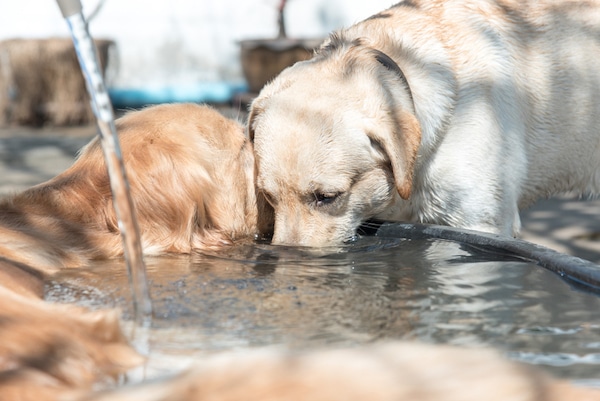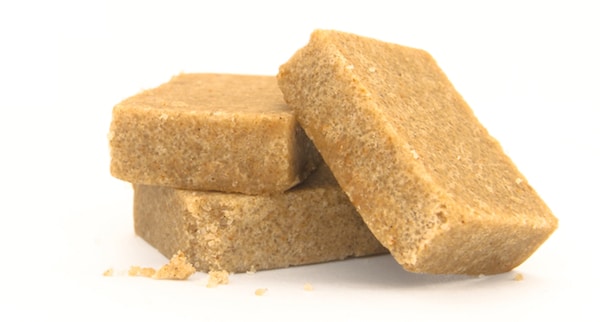My pup Sparky was a miraculous mutt in every way. I adopted this buff-white Bichon-Poodle mix from a regional rescue for severely abused dogs. So right off the bat, Sparky had managed to survive nearly two years of sustained mistreatment before joining our family. He gradually learned to trust (most) people again; demonstrating some serious smarts with a smattering of impressive tricks like “dance,” “bow,” “spin,” “sing,” and “sort the laundry” (just kidding on that last one, but I tried). He even weathered the loss of numerous teeth, which had been eroded by early malnourishment. I watched Sparky adapt to his new daily diet routine like a champ — gobbling up soft-cooked meats and veggies that his sensitive gums could more easily manage.
Unfortunately, as Sparky grew older, he began struggling with a daily drinking problem. No, not that kind — because of course, alcohol in any form is harmful to our hounds. I mean that over time, Sparky started throwing some serious shade at his water bowl. It would sit there faithfully, all day long, filled to the brim with crystal-clear liquid refreshment. Some days, my dog would deign to take a tiny slurp. But most often, he’d stroll right past with a “meh” expression on his furry little face.

Some dogs LOVE drinking water. Others, not so much. (Photo by Shutterstock)
We visited the vet, who gave Sparky a thorough checkup and said his health was solid. But thanks to some research, I realized this was a problem that demanded resolution. According to published veterinary consultant Dr. Carin A. Smith and holistic veterinarian Dr. Richard H. Pitcairn, a dog’s body is roughly 80 percent water for a reason. Water helps dilute and excrete harmful substances. It’s a key catalyst for crucial chemical reactions at the cellular level. It helps drive digestion, control circulation, facilitate waste filtering, and regulate body temperature. It even helps keep pups more predictable in, you know, the pooping department. So dogs who remain consistently under-hydrated may begin struggling with organ issues including liver enzyme imbalance, kidney overload, heart damage, and more.
Anyway, as the weeks progressed, it became abundantly clear that my loving pup had grown quietly hostile toward his H2O. That’s when I began exploring ways to encourage some water-related reconciliation. Sure, it required some sneaky trial-and-error, but eventually, I devised a game plan that helped Sparky get the daily hydration he needed. If your canine is lagging in the liquid consumption department, try some of these at-home strategies.
1. Add water to your dog’s food dish
I call this my “well, duh” solution… because despite its ease and obviousness, the visual “ick” factor probably prompted a mental block. Ready? Step one: Grab a bigger food dish. Step two: Dump a full cup of clean water over your dog’s daily meal. Step three: Glance away to prevent possible gagging. Fortunately, Sparky snarfed this “floating food sludge” down like a champ. If your dog still seems dubious, up the yum factor with a ½ teaspoon of coconut or salmon oil.
2. Serve up some broth
Purchase ready-made organic, low-sodium beef, chicken, or turkey stock. Then, just add a spoonful to your pup’s existing water. No reaction? Add another spoonful or two. Just remember, change out this “broth water” daily. You can also simmer low-sodium beef or chicken bouillon, and refrigerate the resulting broth for use on a daily basis. Again, use just 1 to 3 teaspoons daily.

You can make chicken stock from bouillon. (Photo by Shutterstock)
Want to make a healthy, homemade bone broth that’s bound to grab Bowser’s attention? Place raw beef or turkey bones in a pan, and roast for 30 minutes at 350 degrees F. Transfer to a stock pot, pour 5 to 6 cups of filtered water over the top, and add a teaspoon of apple cider vinegar (because the acidity helps release nutrients). Bring everything to a boil, then reduce to a simmer for three to four hours. Skim away surface impurities, and freeze the broth in ice cube trays.
3. Make pupsicles
Speaking of ice cube trays, remember that most pups will beg for broth-water in frozen form. Another delish, freeze-friendly option is powdered peanut butter, also low in calories. Mix the powder with enough liquid to form an extremely watery paste. Pour this into ice cube trays and freeze, to lock in that hydration. Voila… PB-flavored pup-sicles that keep for weeks, and are great to use as after-exercise snacks or training treats.
4. Try fruits and veggies
Don’t forget that many fruits and vegetables are naturally high in moisture content — and several are perfectly safe for canine consumption. Frozen blueberries and spinach are great options; and many dogs love plain applesauce as well. Sparky’s personal favorite? Seedless, rindless watermelon chunks (which are also great frozen).
5. Get a pet fountain
Beloved wildlife expert Steve Irwin once noted that in the wild, animals typically choose to drink moving water over still water. Why? Because there’s an instinctive understanding that still water may be stagnant, while moving water is often cleaner. The same psychology often works with water-averse dogs. Pet fountains aerate continuously moving water to keep it fresh. The built-in filtration system and constant circulation inhibit bacterial growth, while removing unpleasant tastes. Most of my own canines find this moving water way more appealing, which definitely makes them drink more.
We used many of these techniques to help Sparky get the hydration he needed. Evidently, this really did support his overall wellness because he lived until the ripe old age of 21. Do you have daily drinking tips that have worked with your dog? Please share your suggestions!
The post Does Your Dog Ignore the Water Bowl? 5 Sneaky Ways to Keep Your Pup Hydrated appeared first on Dogster.
No comments:
Post a Comment